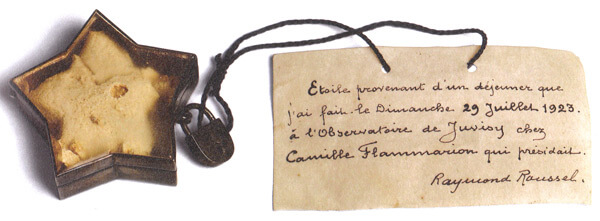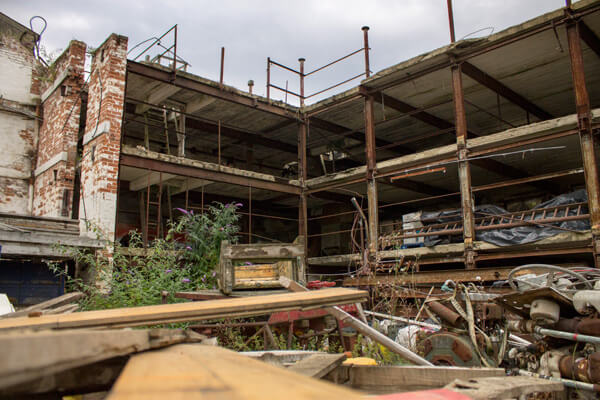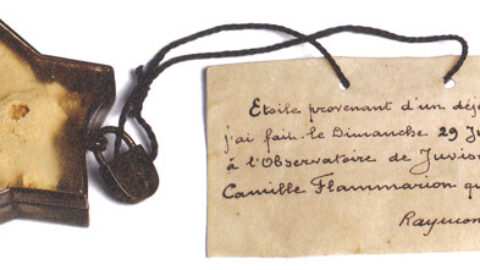On Saturday, September 15, Faster than Sound (Aldeburgh Music experimental program that connects the dots between musical genres and digital art forms) will present David Toop’s Star-Shaped Biscuit, an opera inspired by the writings of the French dandy and author extraordinaire Raymond Roussel, whose star-shaped biscuit was acquired in a Paris flea market by Dora Maar, muse to Picasso. David Toop kindly answered 5 questions for us…
What is your elevator pitch for Star-Shaped Biscuit?
I don’t have one because I have never wanted to work in an industry that has no time to listen to ideas properly. I do have a staircase pitch, however: a woman retreats to a northern island as the world drowns in environmental apocalypse. She re-examines her life, conjuring up images from the past, and in so doing she raises two ghosts from different periods of history. The piece is about solitude and memory on one level but also about ideas. Where are the new ideas to save us from our current environmental, economic and cultural predicament?

Your opera is inspired by Raymond Roussel: where does your affinity with his writings come from?
Roussel was a unique individual – very eccentric, absurdly wealthy and quite self-deluded – who developed a complex writing method that has never been duplicated. When I first came across his books in my early 20s I was fascinated by the possibility (or impossibility) of imagining what it might be like not to be human – to be alien or another species or like a human but living in a world that doesn’t exist in human reality. Through his tortuous, machine-like methodology, Roussel created scenes that were strikingly bizarre, as if from a parallel world. Many of them involved sound-making devices that seemed to come from the most complex and disturbed dreams. They hit the centre of my fascination: was it possible to create a truly alien music, a music not of my culture?
Your score features some improvisation: what influenced this choice? How did the performers respond to it?
The piece I ‘composed’ on the computer acts as a template and timeline, the psychology of a character in itself, an environment that shadows and expands the space in which the drama takes place. I workshopped the piece with the singers and instrumentalists, using my experience of directed improvisation. The other important point is that all of them were picked very carefully for the range of their abilities, particularly the ability to improvise. That was my first question: are you happy to improvise? I can’t read or write notated music so I had to find a method and this was it. I believe it creates a structure within which everybody moves – knowing each cue and change of mood as it comes – and then they add their own voice, their own responsibility, to the work.
You wrote both text and music for Star-Shaped Biscuit: would you encourage young composers to do so if they can?
If they can, yes, but not everybody can write. The difficulty I found in trying to collaborate with other writers was always the sense of frustration, wanting to edit what they had done or do it myself. That’s not a reflection on their abilities; it came about because I’m a writer, more prolific and better-known as a writer than as a musician or composer, in fact. But I do feel that there should be constant reciprocation and feedback – the writing should generate music and music should generate writing. That proves to be difficult when you do it all yourself because each aspect of the work seems to be waiting for the other, though I prefer that awkwardness to the prospect of existing words being set or a libretto being thrown on top of a score.
One of the big issues for me was credibility. Did each line have credibility as a sung text? I constantly asked myself why the characters were singing and whether they sounded convincing to me. The main character, based on Dora Maar, is isolated. She reflects on her life and sings to hear the fullness of her own voice. She sings to create a presence as her voice calls out for some kind of reply. It’s something many of us do when we’re on our own – sing to ourselves or hum away while preoccupied.
My method was not to work from scratch but to collage lines, words, passages from other writers. Sometimes I shock myself. I’m reading a book by a particular author and suddenly I think, that’s a line from Star-shaped Biscuit! Shakespeare is in there, alongside Picasso, Joseph Conrad, Dora Maar, Mary Shelley, Edgar Allen Poe, Vernon Lee, Zeami, Jacques Lacan, Daniel Defoe, Gherasim Luca, Virginia Woolf, James Joyce, Aime Cesaire, coffin texts and spells from ancient Egypt, ethnopoetic ‘translations’ by Jerome Rothenberg, even a bit of me. Everybody except Raymond Roussel. But it’s not just about words. What’s more important is the combined effect of vocal delivery, the interaction of musical textures, the sounds and dynamics of digital electronics, the mise-en-scene. This is a piece influenced by cinema as much as anything – films like Mizoguchi’s Ugetsu Monogatari or Kaneto Shindo’s Onibaba – and I watched a film of Britten’s Curlew River, researched the influence of the noh theatre on his church parables, and soaked up the atmosphere of the reed beds at Snape. All of those elements interlink.

Do you think that opera is the most suited form to bring contemporary music to new audiences?
Film is probably more effective. Look at Peter Strickland’s Berberian Sound Studio – full of references to improvised music, sound poetry, electronic music, extended vocal techniques and electronic music, but at the same time funny, serious, thoughtful, innovative and accessible. But if we’re talking about hearing music in real time, live, in a performance space, then opera has huge potential to communicate with music fans who don’t find the contemporary music environment particularly easy to penetrate. Opera is impure and bloody, quite embarrassing really, particularly in relation to post-Beckett theatre, but there are great opportunities in impurity, as pop music has proved many times. Honestly, I don’t know enough about the western operatic tradition to speak about it with much confidence but I do believe that opera of any tradition has roots in ritual. To some degree it’s a procession of song glued together by a lurid story. Many composers seem to think they have to use a particular kind of operatic voice; they also feel their story has to make sense in some way. Why? Surely in the 21st century, any kind of voice can be used within an opera – an R&B voice, for example, or a folk voice. As for stories, we all love stories but do they have to make complete sense or be resolved, given what we have learned from modernism? For me it’s far more important to throw out ideas, themes, atmospheres and resonances that are engaging, disturbing, beguiling, haunting – the kind of ideas that an audience may not follow in the moment but afterwards they recur as persistent and provocative images of action or sound.
Star-shaped Biscuit, an opera by David Toop
Saturday, September 15 at 7:30 pm
Derelict Building 9, Snape Maltings,Suffolk, IP17 1SP
Tickets £15
For more info, visit: http://www.fasterthansound.com
—
Thomas Deneuville, the founder and editor of I CARE IF YOU LISTEN, is a French-born composer living in NY. Find him on Twitter: @tonalfreak
























